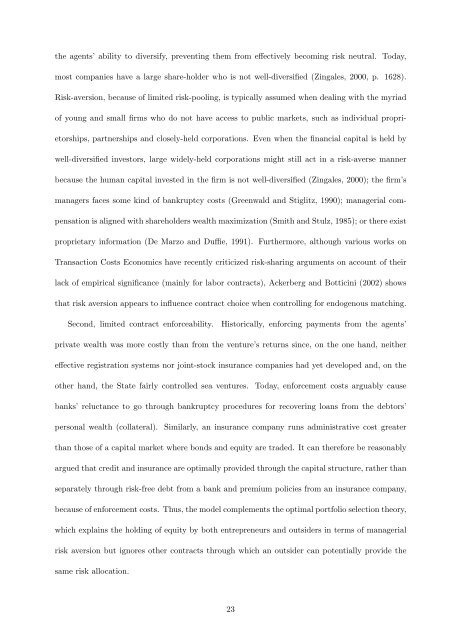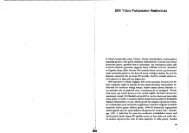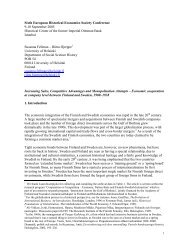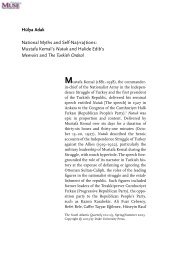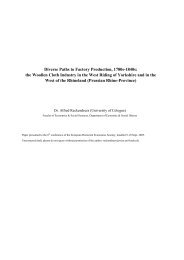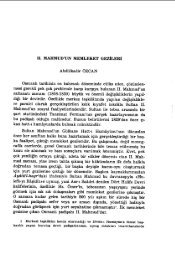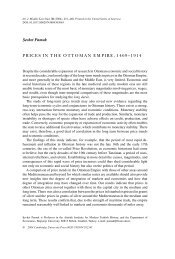The Birth of Insurance Contracts - The Ataturk Institute for Modern ...
The Birth of Insurance Contracts - The Ataturk Institute for Modern ...
The Birth of Insurance Contracts - The Ataturk Institute for Modern ...
Create successful ePaper yourself
Turn your PDF publications into a flip-book with our unique Google optimized e-Paper software.
the agents’ ability to diversify, preventing them from effectively becoming risk neutral. Today,<br />
most companies have a large share-holder who is not well-diversified (Zingales, 2000, p. 1628).<br />
Risk-aversion, because <strong>of</strong> limited risk-pooling, is typically assumed when dealing with the myriad<br />
<strong>of</strong> young and small firms who do not have access to public markets, such as individual propri-<br />
etorships, partnerships and closely-held corporations. Even when the financial capital is held by<br />
well-diversified investors, large widely-held corporations might still act in a risk-averse manner<br />
because the human capital invested in the firm is not well-diversified (Zingales, 2000); the firm’s<br />
managers faces some kind <strong>of</strong> bankruptcy costs (Greenwald and Stiglitz, 1990); managerial com-<br />
pensation is aligned with shareholders wealth maximization (Smith and Stulz, 1985); or there exist<br />
proprietary in<strong>for</strong>mation (De Marzo and Duffie, 1991). Furthermore, although various works on<br />
Transaction Costs Economics have recently criticized risk-sharing arguments on account <strong>of</strong> their<br />
lack <strong>of</strong> empirical significance (mainly <strong>for</strong> labor contracts), Ackerberg and Botticini (2002) shows<br />
that risk aversion appears to influence contract choice when controlling <strong>for</strong> endogenous matching.<br />
Second, limited contract en<strong>for</strong>ceability. Historically, en<strong>for</strong>cing payments from the agents’<br />
private wealth was more costly than from the venture’s returns since, on the one hand, neither<br />
effective registration systems nor joint-stock insurance companies had yet developed and, on the<br />
other hand, the State fairly controlled sea ventures. Today, en<strong>for</strong>cement costs arguably cause<br />
banks’ reluctance to go through bankruptcy procedures <strong>for</strong> recovering loans from the debtors’<br />
personal wealth (collateral). Similarly, an insurance company runs administrative cost greater<br />
than those <strong>of</strong> a capital market where bonds and equity are traded. It can there<strong>for</strong>e be reasonably<br />
argued that credit and insurance are optimally provided through the capital structure, rather than<br />
separately through risk-free debt from a bank and premium policies from an insurance company,<br />
because <strong>of</strong> en<strong>for</strong>cement costs. Thus, the model complements the optimal portfolio selection theory,<br />
which explains the holding <strong>of</strong> equity by both entrepreneurs and outsiders in terms <strong>of</strong> managerial<br />
risk aversion but ignores other contracts through which an outsider can potentially provide the<br />
same risk allocation.<br />
23


